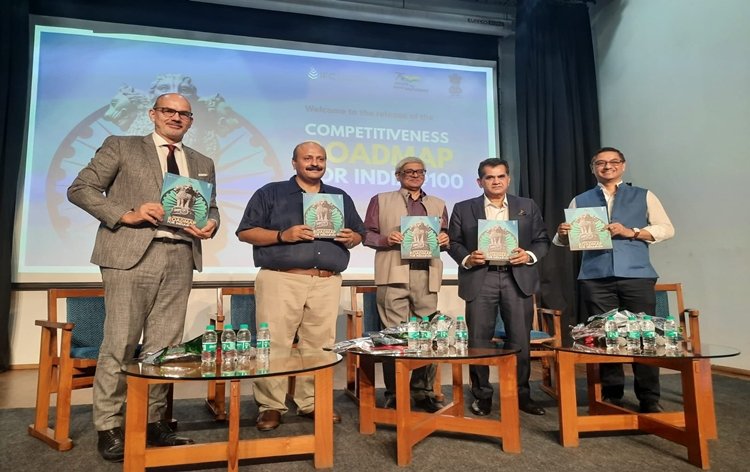NEW DELHI: Economic Advisory Council to Prime Minister, EAC-PM today released the Competitiveness Roadmap for India@100 in New Delhi. The document was released in the presence of Chairman EAC-PM Dr Bibek Debroy, India’s G20 Sherpa Amitabh Kant, Member of EAC-PM Sanjeev Sanyal and Dr Christian Ketels from Harvard Business School.
In his address, Dr Debroy highlighted the importance of looking at economic trends to ascertain what India needs to do to be a highly prosperous country by 2047. He said, consumption, investment, government expenditure and net exports are the real growth drivers. The Chairman of EAC-PM said, there are four ways to analyse economic growth, slicing the drivers of growth, sectoral slice, looking at factor inputs and regional disparity. He said, since 2014 Government have been taking several steps to remove inequity and inequality through different Schemes like Aspirational District Programme and Ujjwala.
Dr Debroy said, if country’s development trajectory has to emerge faster, higher and stronger, both government policies and the enterprises and markets functioning in the environment set by the former are of great significance. Adding emphasis to the importance of a renewed approach to development, G20 Sherpa Amitabh Kant said, in an ever-evolving global context, India is working towards presenting a sustained growth model based on ease of living for its people and ease of doing business for its industries. He said, the emphasis is not just on attaining the ambitions set for India but also on how the country gets there.
The Competitiveness Roadmap is a collaborative endevour between EAC-PM, the Institute for Competitiveness headed by Dr Amit Kapoor and Professor Michael E. Porter and Dr Christian Ketels from Harvard Business School. In a video message, Professor Michael Porter mentioned that the competitiveness framework underlying the roadmap offers a strategic perspective on how to translate the diagnostics on a country’s competitiveness fundamentals into actionable insights. He said, the solution does not lie in narrow interventions.

